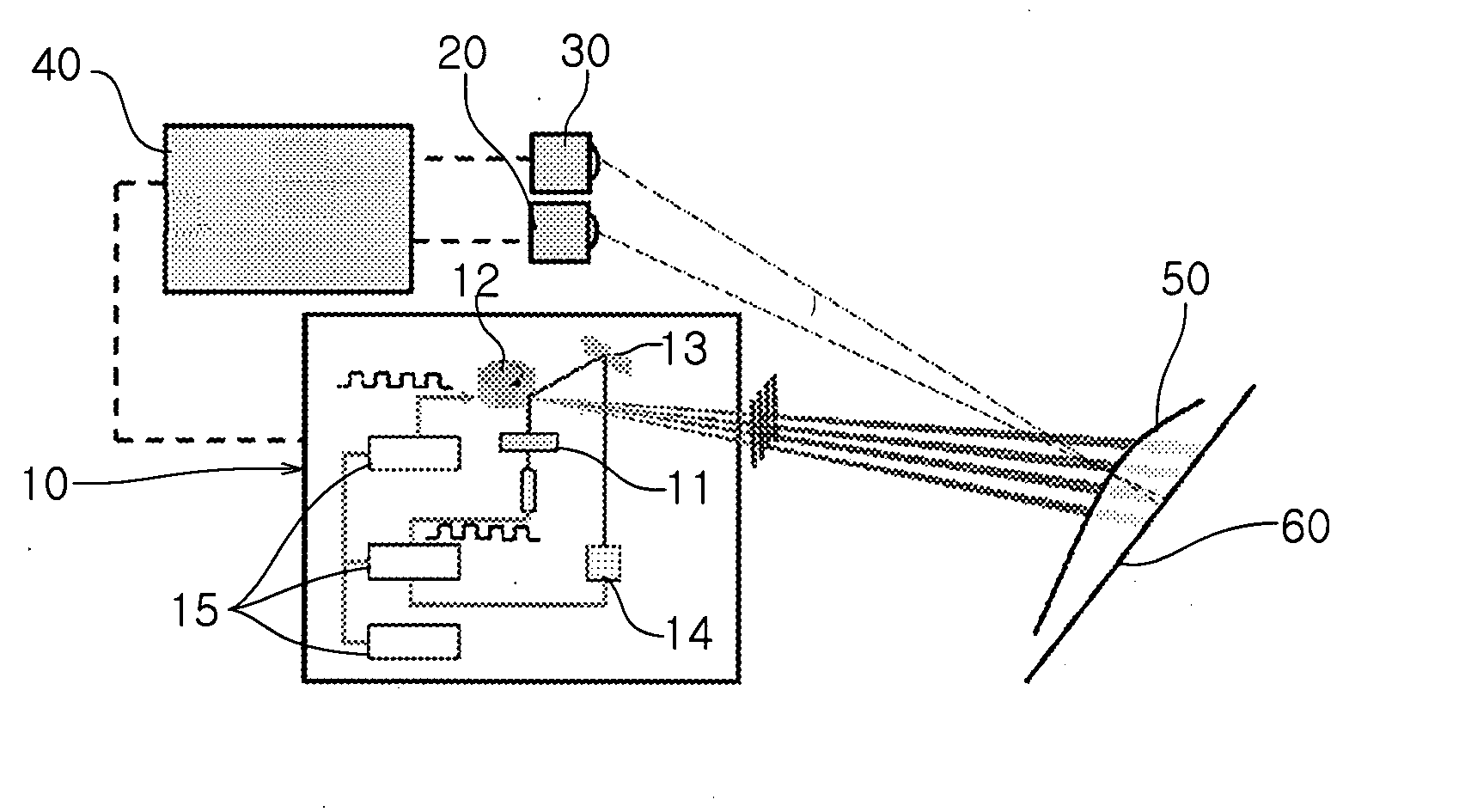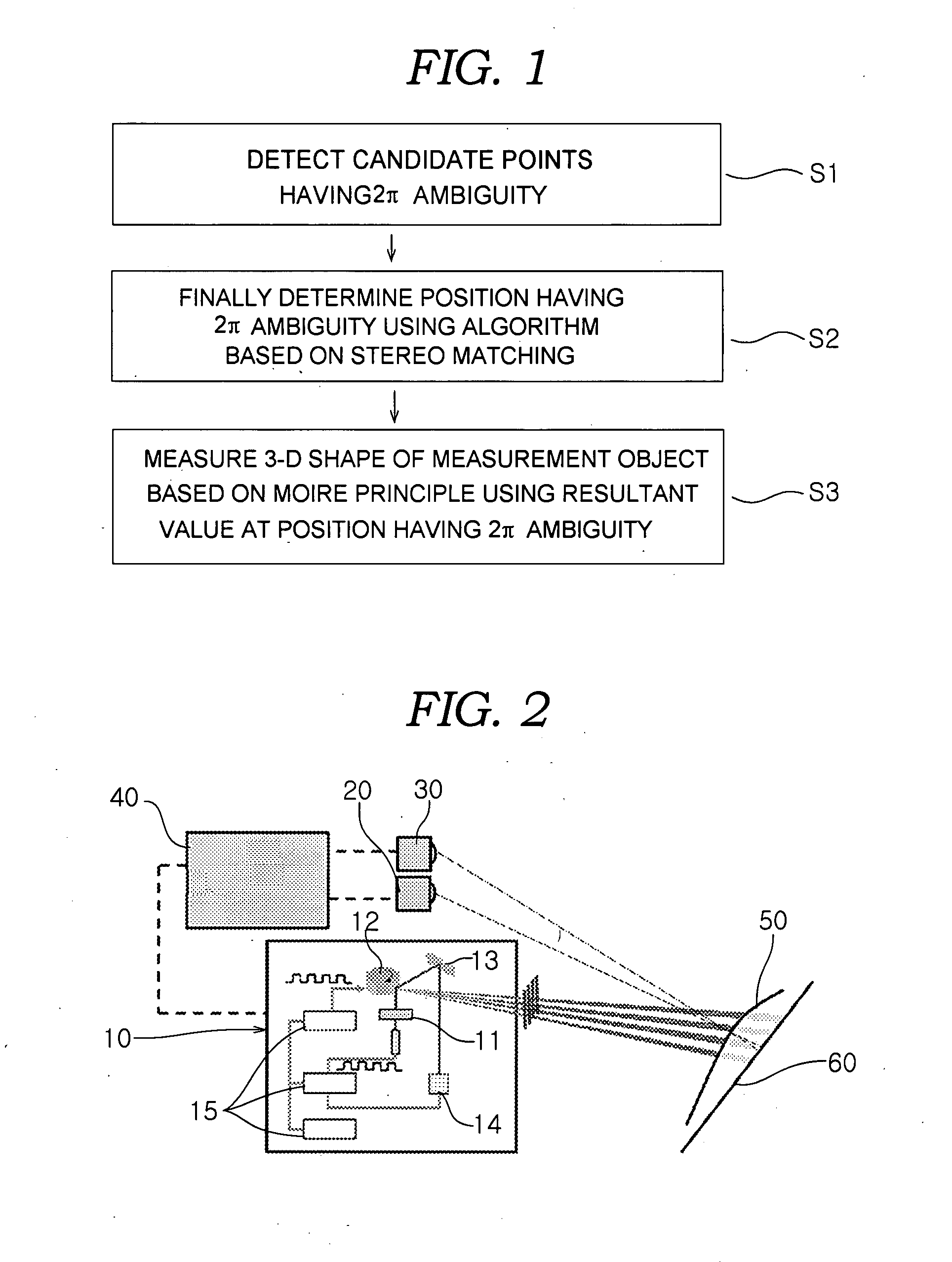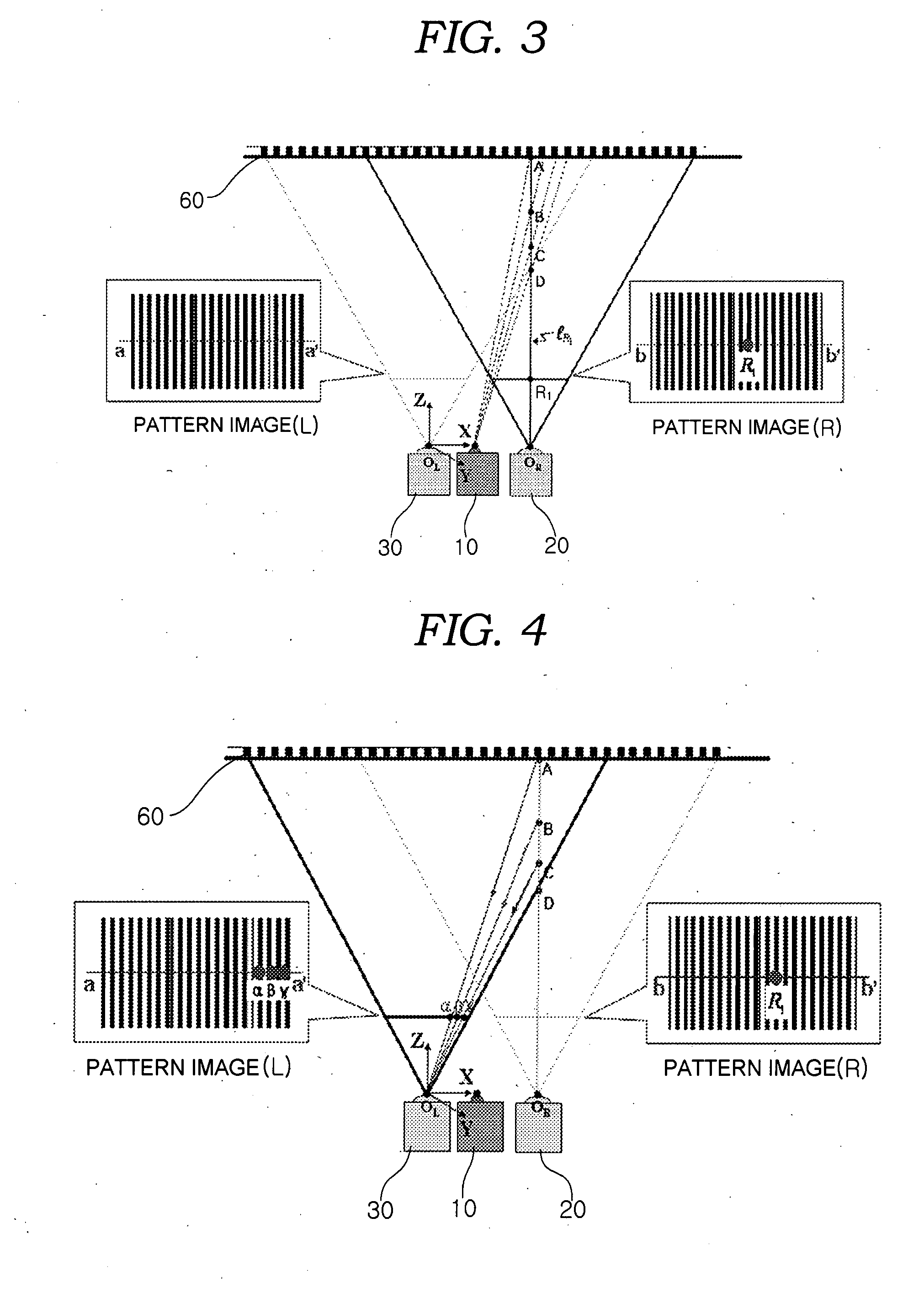Three-dimensional shape measurement apparatus and method for eliminating2pi ambiguity of moire principle and omitting phase shifting means
- Summary
- Abstract
- Description
- Claims
- Application Information
AI Technical Summary
Benefits of technology
Problems solved by technology
Method used
Image
Examples
experiment 1
[0035] Measurement object 51 having a thickness of 50 mm, as shown in FIG. 6A, was measured using the experimental apparatus of FIG. 5. The pattern images detected by the first and second cameras 20 and 30 are as shown in FIG. 6C. In this case, the conventional 3-D shape measurement method uses only the pattern projector 10 and the first camera 20 to measure object 51 based on the typical Moire principle, and thus derives the results shown in FIG. 6D. Further, the 3-D shape measurement method according to the present invention uses the pattern scanner 10 and the first and second cameras 20 and 30 to measure object 51 based on the typical Moire principle, and thus derives the results shown in FIG. 6E. That is, since the thickness (50 mm) of object 51 is less than the pitch of the fringe pattern, the conventional method and the method of the present invention derived the same experimental results, as shown in FIGS. 6D and 6E.
experiment 2
[0036] As shown in FIG. 7A, measurement object 52 having a thickness of 80 mm was spaced apart from the reference surface 60 by 90 mm, and was measured using the experimental apparatus of FIG. 5. The pattern images detected by the first and second cameras 20 and 30 are as shown in FIG. 7C. In this case, the conventional 3-D shape measurement method uses the pattern projector 10 and only the first camera 20 to measure object 52 based on the typical Moire principle, and thus derives the results shown in FIG. 7D. However, the 3-D shape measurement method of the present invention uses the pattern projector 10 and the first and second cameras 20 and 30 to measure object 52 based on the typical Moire principle, and thus derives the results shown in FIG. 7E. That is, in the conventional measurement method, since the distance between the front surface of object 52 and the reference plane is greater than 2π of the pattern period in the state in which object 52 is spaced apart from the refere...
experiment 3
[0037] As shown in FIG. 8A, a hemispherical measurement object 53 having a depth of 190 mm was measured using the experimental apparatus of FIG. 5. The pattern images detected by the first and second cameras20 and 30 are as shown in FIG. 8C. Here, the conventional 3-D shape measurement method uses the pattern projector 10 and only the first camera 20 to measure object 53 based on the typical Moire principle, and thus derives the results of FIG. 8D. The 3-D shape measurement method according to the present invention uses the pattern projector 10 and the first and second cameras 20 and 30 to measure object 53 based on the typical Moire principle, and thus derives the results of FIG. 8E. That is, it is impossible to secure accurate spatial information about object 53 using the conventional measurement method, but the measurement method of the present invention obtains 3-D shape information identical to the actual spatial information about object 53, as shown in FIG. 8E.
[0038]Therefore,...
PUM
 Login to View More
Login to View More Abstract
Description
Claims
Application Information
 Login to View More
Login to View More - R&D
- Intellectual Property
- Life Sciences
- Materials
- Tech Scout
- Unparalleled Data Quality
- Higher Quality Content
- 60% Fewer Hallucinations
Browse by: Latest US Patents, China's latest patents, Technical Efficacy Thesaurus, Application Domain, Technology Topic, Popular Technical Reports.
© 2025 PatSnap. All rights reserved.Legal|Privacy policy|Modern Slavery Act Transparency Statement|Sitemap|About US| Contact US: help@patsnap.com



